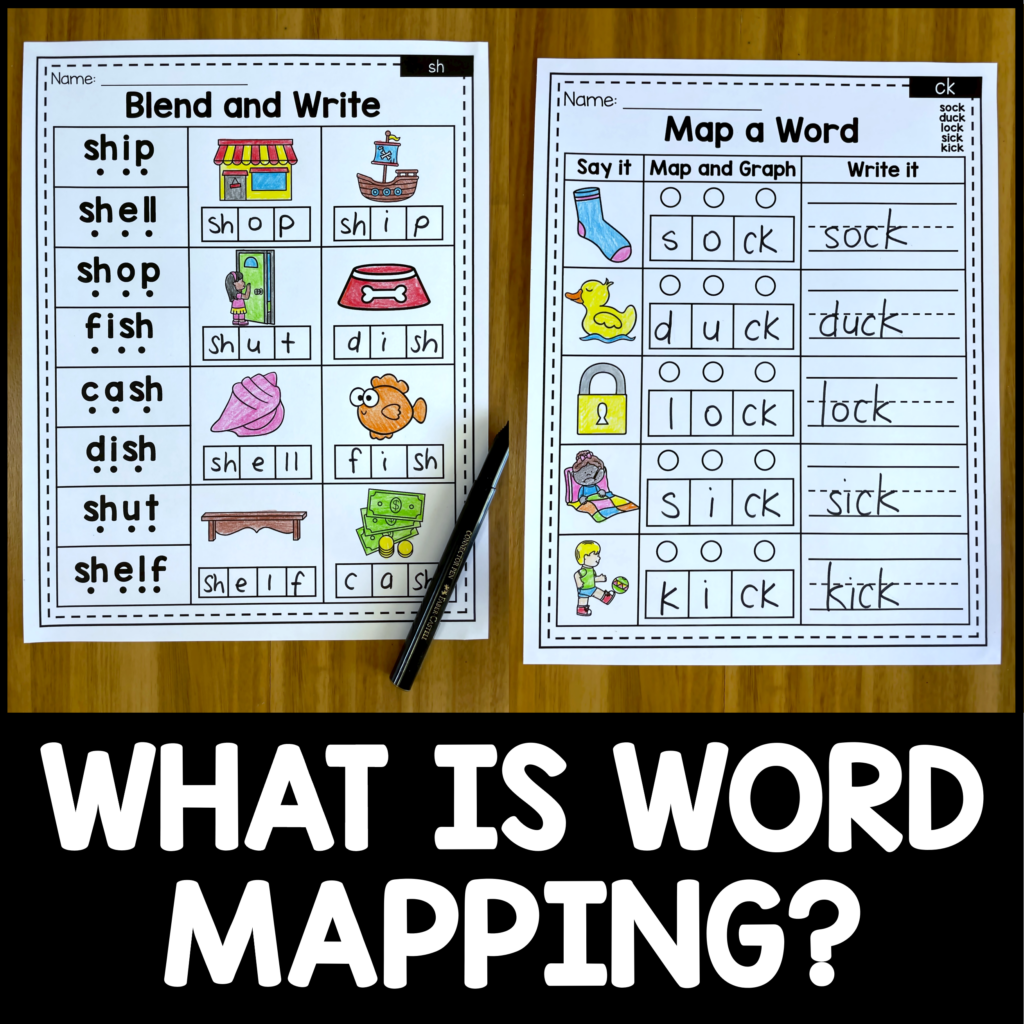
Word mapping is a concept that you have most likely come across over the past few months. The Science of Reading movement has popularized it, but it is definitely not a new concept. Word mapping, also known as phoneme-grapheme mapping, is an instructional activity where students link the ‘sound’ part of a word to the ‘letter’ part of a word.
Word mapping ties in with a reading theory known as ‘orthographic mapping’. In a nutshell, orthographic mapping is ‘the mental process we use to permanently store words for immediate, effortless retrieval. It is the process we use to take an unfamiliar printed word and turn it into an immediately recognizable word’ (Kilpatrick, 2015). There are many wonderful, free resources that describe the theory behind orthographic mapping, so I won’t bore you with facts, diagrams or lengthy explanations. Instead, I’ll use this space to show you how word mapping works, and how you can implement it in your classroom. If you would like to learn more about orthographic mapping, I highly suggest researching David Kilpatrick and his associated texts.
What is word mapping?
Each word has 3 components – its sounds (phonemes), its letters (graphemes) and its meaning. Word mapping is an instructional tactic that you can use to help your students connect the sounds (phonemes) to the letters (graphemes) in a word.
To simplify the process of word mapping, here are the steps:
1. Say the name of the word/picture aloud and ascertain meaning.
2. Orally break down the sounds into phonemes by tapping or using manipulatives.
3. Write out the phonemes into letters or letter combinations (graphemes).
4. Read the entire word aloud.
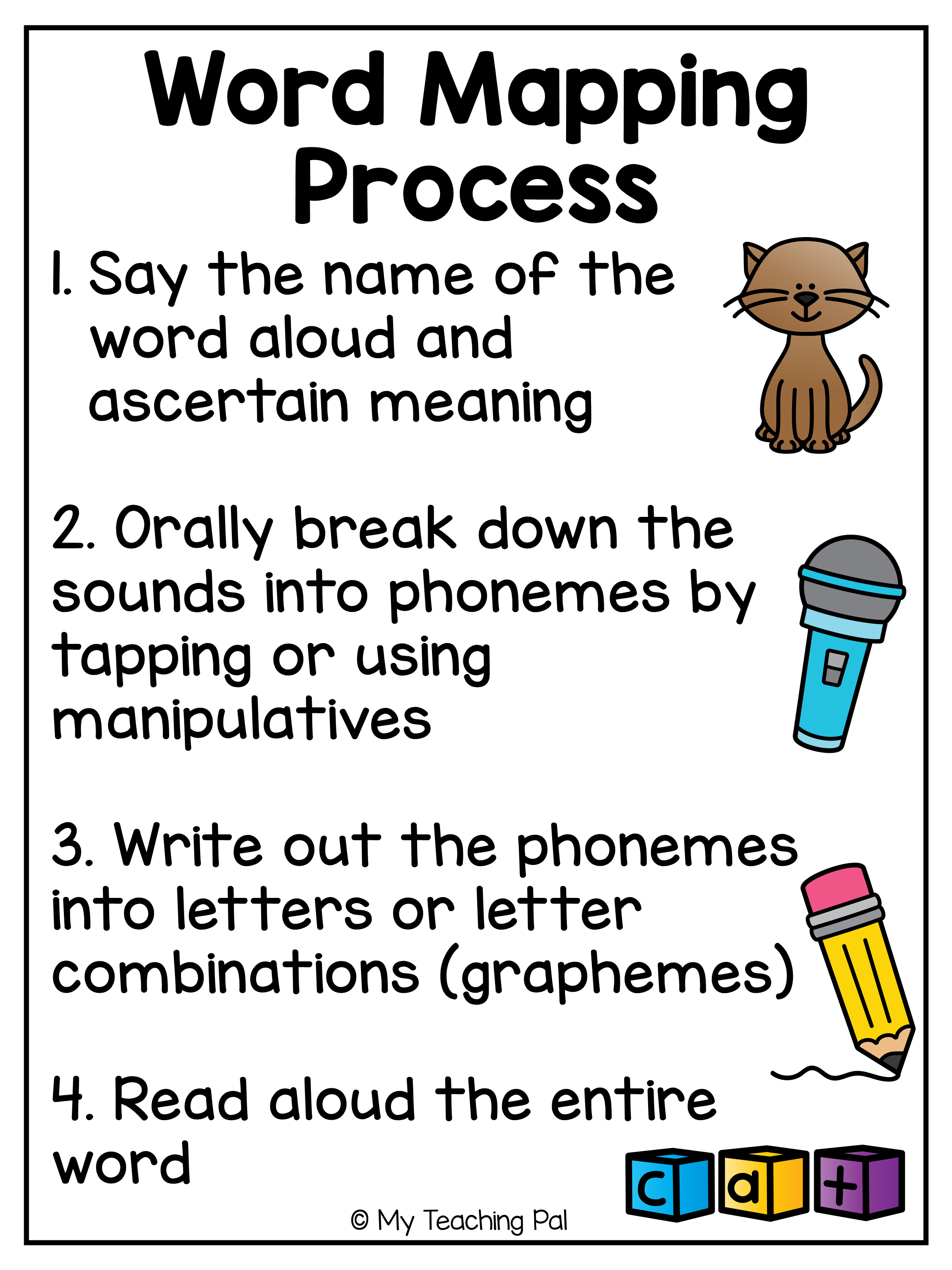
The word mapping process is different to decoding because students begin with a whole word that they break up, rather than a combination of letters that they must combine to form a word. It is the process of breaking words up and focusing on the phonemes/graphemes that helps to improve word recognition and store it into long term memory.
Which parts of a word stay together as one phoneme/grapheme?
Since releasing my Science of Reading Bundle, the most common question I’ve been asked is which parts of a word stay together and which are split into separate phonemes/graphemes. Many teachers are used to splitting words into rimes or letters. For example, c/at or f/e/e/t. The word mapping approach has students split letters into individual phonemes or sounds. This means that cat is split into c/a/t and feet is split into f/ee/t. The ‘ee’ in feet makes one sound so it’s a separate phoneme/grapheme. I also wanted to note that blends are separate letters and not treated as a single sound as you can still hear the individual sounds in blends. For example, the word crab should be split into c/r/a/b. I’ve created a cheat sheet below which details the most common phonemes/graphemes taught in K-2 that are separate, single sounds.

Activities
I’ve created some activities that are aligned with the Science of Reading and are designed to help promote long term retention of words and sounds. I’ll detail below how to use these resources to amplify the reading and spelling skills of your students. However, before I begin, I’m going to provide you with 2 definitions of terms you may come across in the following sections.
Phoneme: A phoneme is a speech sound. It has nothing to do with print or the written form of letters. It refers to the individual units that you can hear when you break a word up into sounds. For example, the ‘c’ at the start of ‘cab’ is a phoneme when you say it out loud.
Grapheme: A grapheme is the written form of a phoneme (sound). For example, the long a sound can be represented by numerous graphemes such as a_e, ai, ay, eigh etc.
Map a Word
These Map a Word worksheets have students perform all the steps of phoneme-grapheme mapping.
Step 1: To begin, students point to the picture and say the picture name. The picture support combined with the word bank on the top right-hand corner help to add meaning to the words (I’ve also included an option without a word bank in case you want an extra challenge).
Step 2: Students begin orally ‘mapping’ the sounds (phonemes) that they can hear in the word by tapping the circles at the top of the boxes. There are exactly enough circles as there are sounds in the word. In this example, students would tap the first box and say ‘/r/’, then they’d tap the second box and say ‘/ai/’ and then the final box and say ‘/n/’.
Step 3: Next, students write the letters (graphemes) in the Elkonin boxes that represent each phoneme they said aloud. There are exactly enough boxes as there are sounds.
Step 4: Students read the word aloud and rewrite it on the line.
If you’d like to check out the Map a Word worksheets, you can find them here. There are sheets included for short vowels, CVCe words, vowel teams, digraphs, trigraphs, blends, double consonants, r-controlled vowels and diphthongs. They are also part of my Mega Science of Reading Worksheet Bundle at a discounted price.
Blend and Write
These Blend and Write worksheets follow a similar format as the worksheets above, however, they provide less picture support and encourage students to decode words before graphing them.
Step 1: To begin, students point to the first word and use the dots as scaffolds to read it aloud. The graphemes are already split up for students with spaces/dots so that students can focus on saying the sound aloud correctly and combining them together to form a word.
Step 2: Next, students cognitively think about the word and establish meaning.
Step 3: Then, students locate the picture that matches the word and graph the phonemes (sounds) into the boxes. They do this by saying the word aloud and then ‘sounding it out’ to write each grapheme (letter/s) in the boxes. There are exactly enough boxes as there are sounds.
If you’d like to check out the Blend and Write worksheets, you can find them here. There are sheets for short vowels, CVCe words, vowel teams, digraphs, blends, r-controlled vowels and diphthongs. They are also part of my Mega Science of Reading Worksheet Bundle at a discounted price.
Heart Words
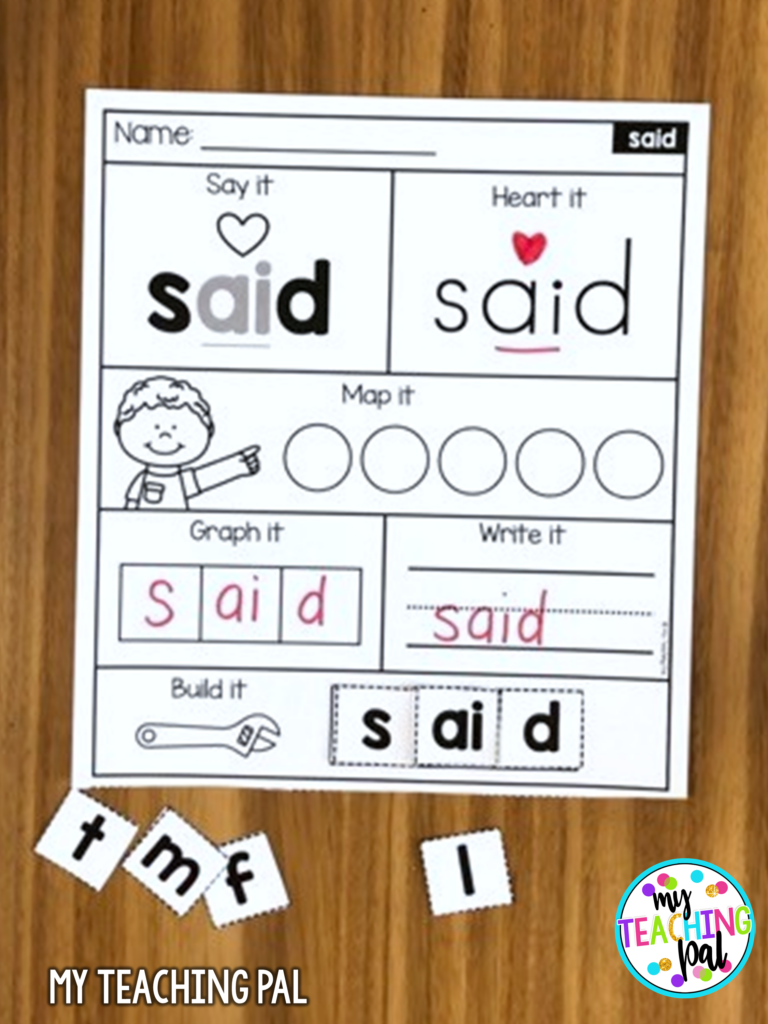
In the past, many teachers have relied on memorization to teach sight words. This doesn’t work for all students, and in fact, most sight words are actually phonetically regular which means that students don’t actually need to remember them by sight. They can sound them out!
The heart word method teaches students how to read sight words phonetically rather than memorize them. It draws on the theory of orthographic mapping which states that when students break words apart into phonemes/graphemes and then build them back together, long term retention is achieved. The bonus part of this method is that these skills are transferrable to other words! It’s basically like that proverb that says if you give a man a fish, he’ll eat for a day, but if you teach a man to fish, he’ll eat for a lifetime.
When using this method, attention is drawn to irregular or untaught sounds by using a heart. The heart is a reminder that this part of the word is ‘tricky’ and must be remembered by heart. The remainder of the word can be phonetically sounded out by students.
These heart word worksheets provide students with the opportunity to practice reading sight words aloud, mapping the sounds they hear, graphing the sounds and building the words using graphemes.
Please Note: In the following example, ‘ay’ is hearted as it is an untaught sound, although it is regular.
Step 1: To begin, students point to the word and say it aloud. Students will most likely need help here as they may not be familiar with the word and it contains irregular or untaught graphemes.
Step 2: Next, students use marker to heart the parts of the word that are irregular or untaught. The heart is a reminder that this part of the word is ‘tricky’ and must be remembered by heart.
Step 3: Students map the phonemes (sounds) that they can hear in the word. They do this by tapping or placing counters on the circles for each sound they can hear in the word as they break it up orally.
Step 4: Then, students graph the word by writing the letters that match each of the phonemes they said aloud. Each grapheme goes in a separate box.
Step 5: Students rewrite the word on the line.
Step 6: Students build the word by cutting out graphemes (letters and letter combinations) and organizing them to form the word.
If you’d like to check out the Heart Word worksheets, you can find them here. 285 words are included! They are also part of my Mega Science of Reading Worksheet Bundle at a discounted price.
Sound Work
Although these Sound Work worksheets don’t follow the entire process of word mapping, the bottom section encourages students to break up and rebuild words that follow a specific phonics pattern. These sheets are also aligned with the Science of Reading and are designed to help students learn about a specific grapheme and it’s associated phoneme (sound).
Step 1: To begin, students say the sound that the grapheme makes aloud. Mouth images are provided to help with articulation and to show students how to position their lips, teeth and tongue to say the sound correctly.
Step 2: Next, they point to the graphemes and read the sounds aloud.
Step 3: Then, they trace the graphemes using pencil or marker.
Step 4: Students then read the words that contain the grapheme. Dots are provided to help break the words up into sections to make them easier to decode for students.
Step 5: Students rebuild the words by cutting out the graphemes and pasting them in order.
If you’d like to check out the Sound Work worksheets, you can find them here. There are 129 worksheets included altogether that cover so many sounds. They are also part of my Mega Science of Reading Worksheet Bundle at a discounted price.
All of the worksheets described in this blog post are 20% off in my Mega Science of Reading worksheet Bundle. It contains over 500 worksheets to help your students become super readers and spellers.
Science of Reading Worksheet Bundle
The more I learn about the Science of Reading, the more I understand the importance of aligning your reading and phonics program with it. Most of you have probably come across the term already, and I highly suggest researching into its methods. If you have any questions or comments, let me know below 🙂
Shop this post






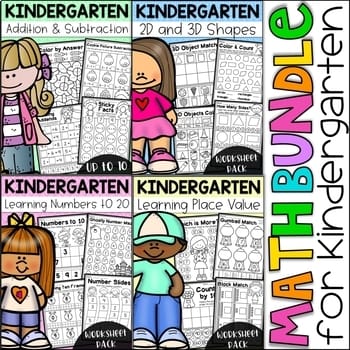




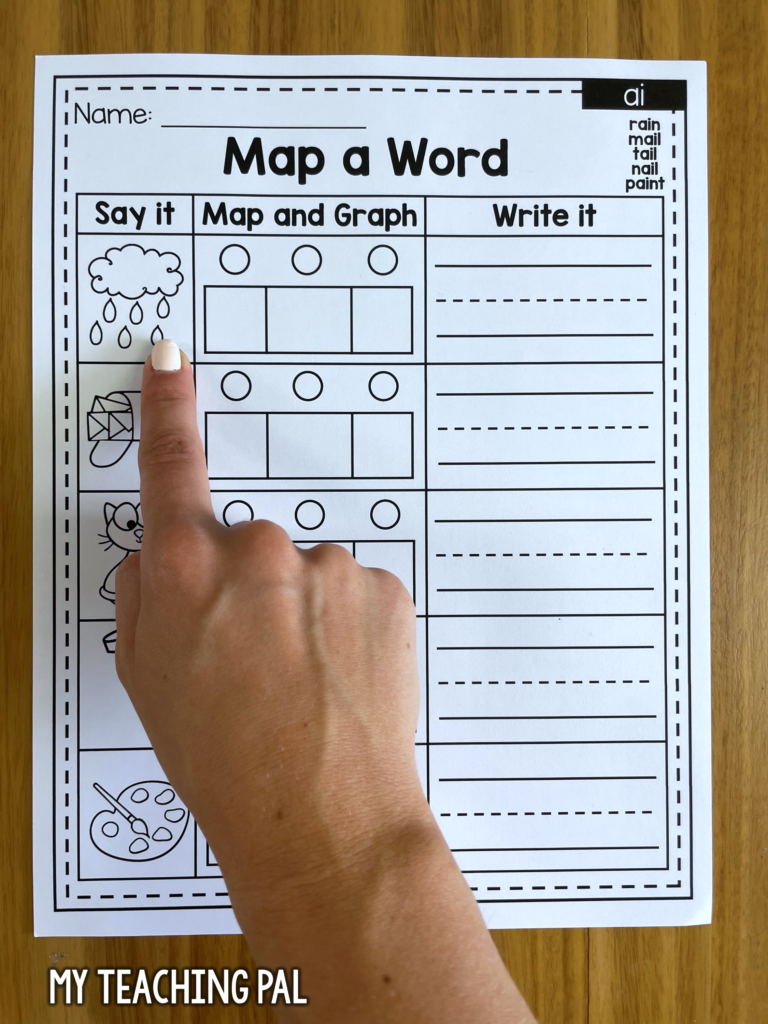
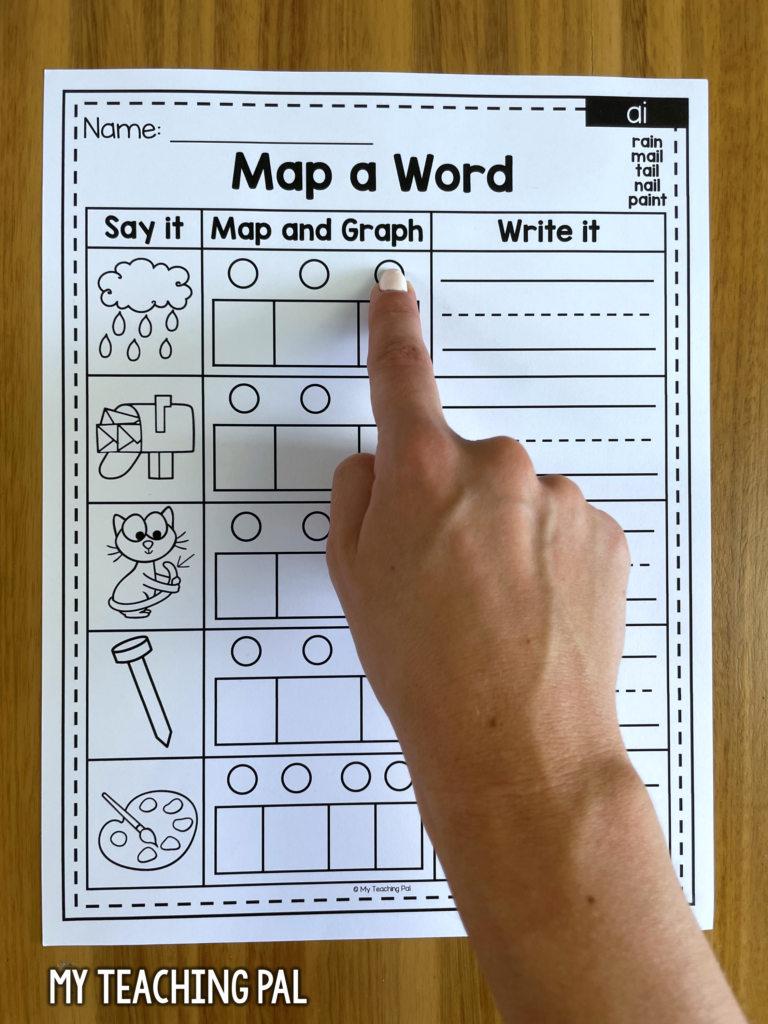

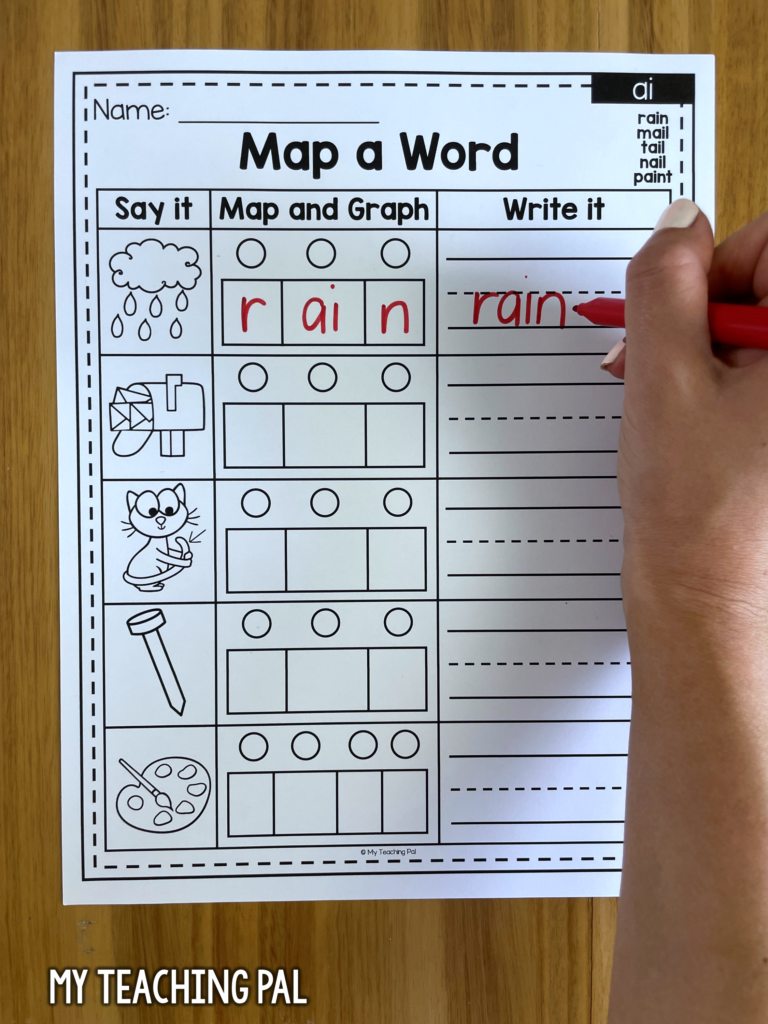
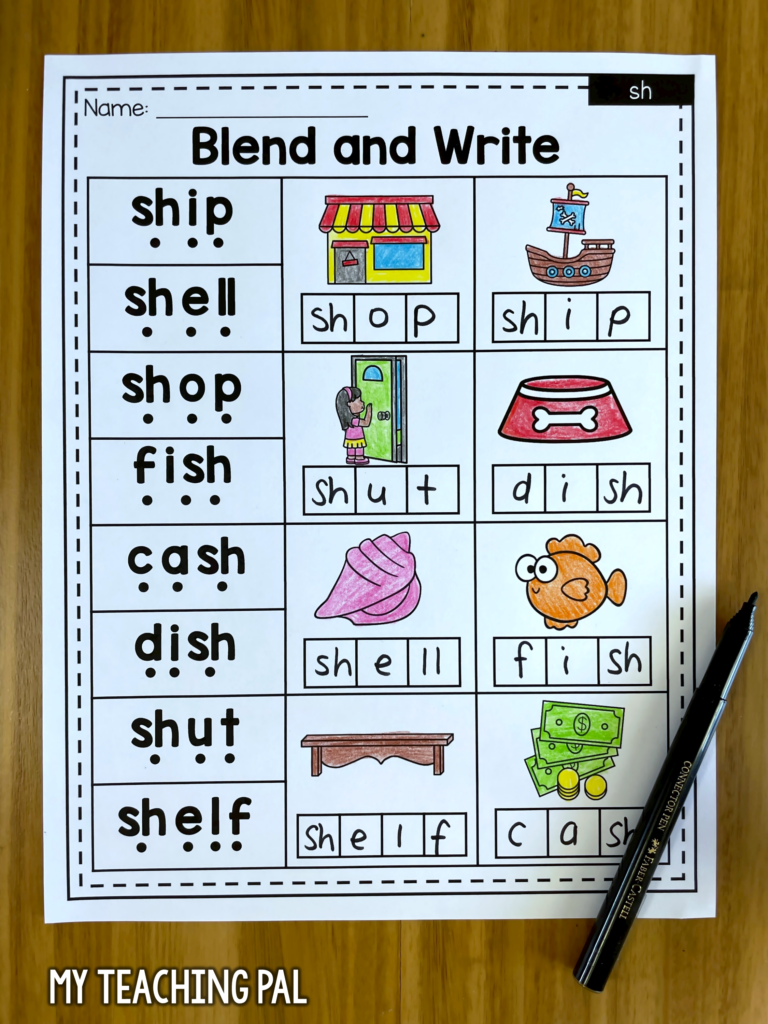
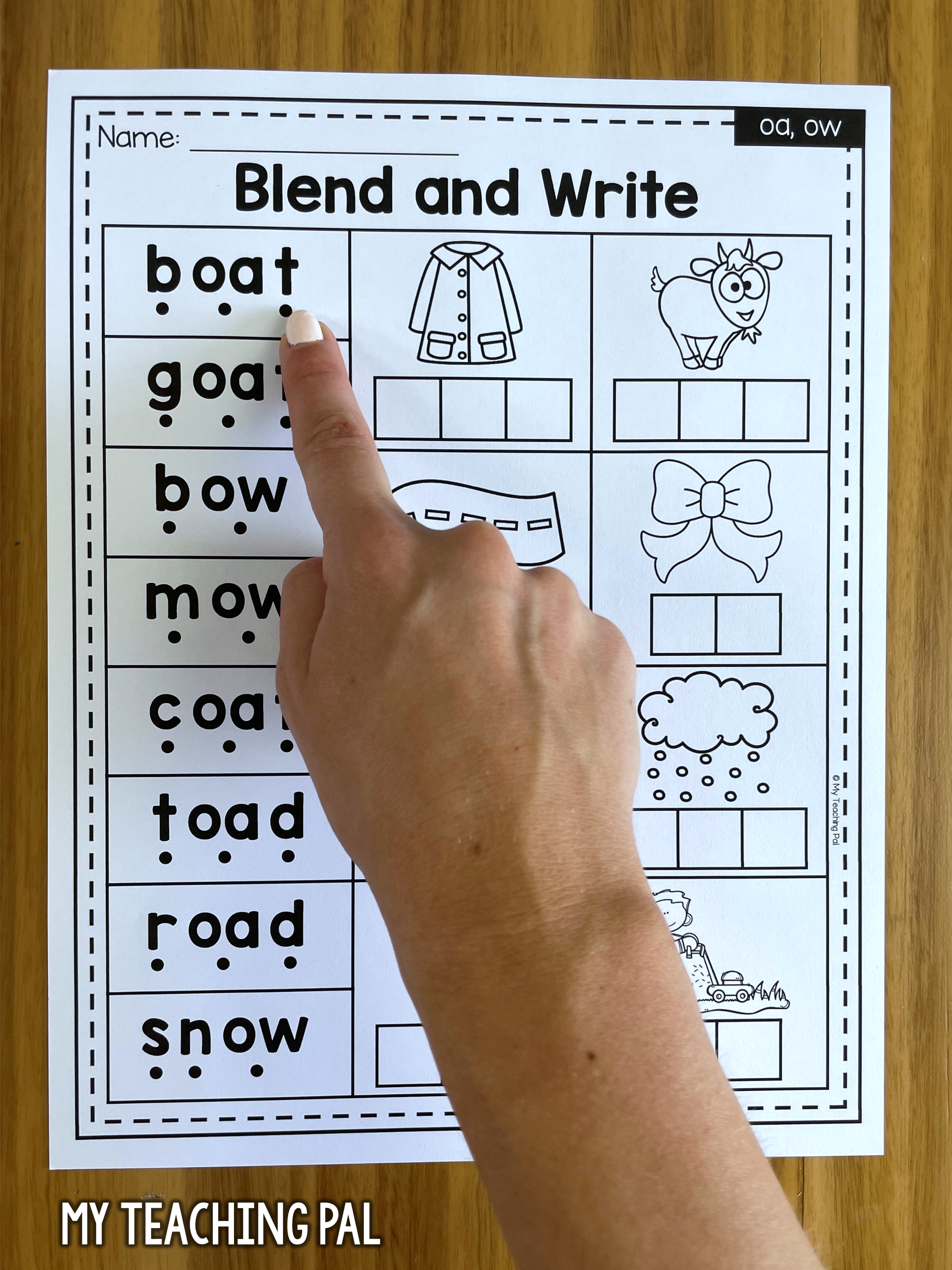
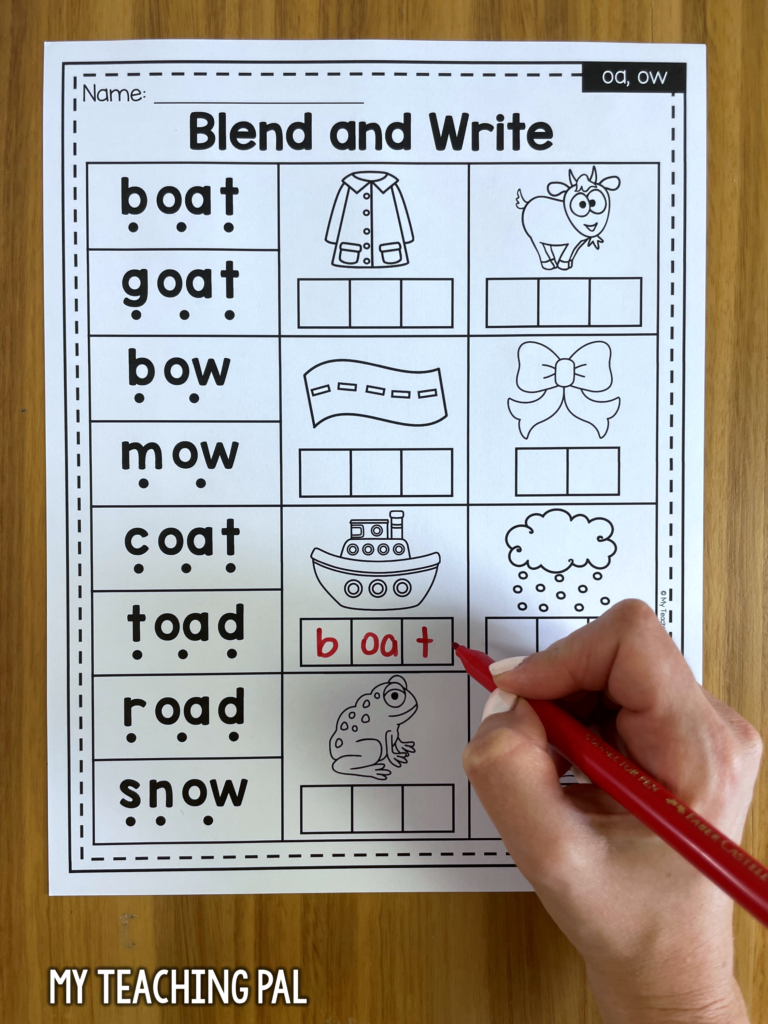
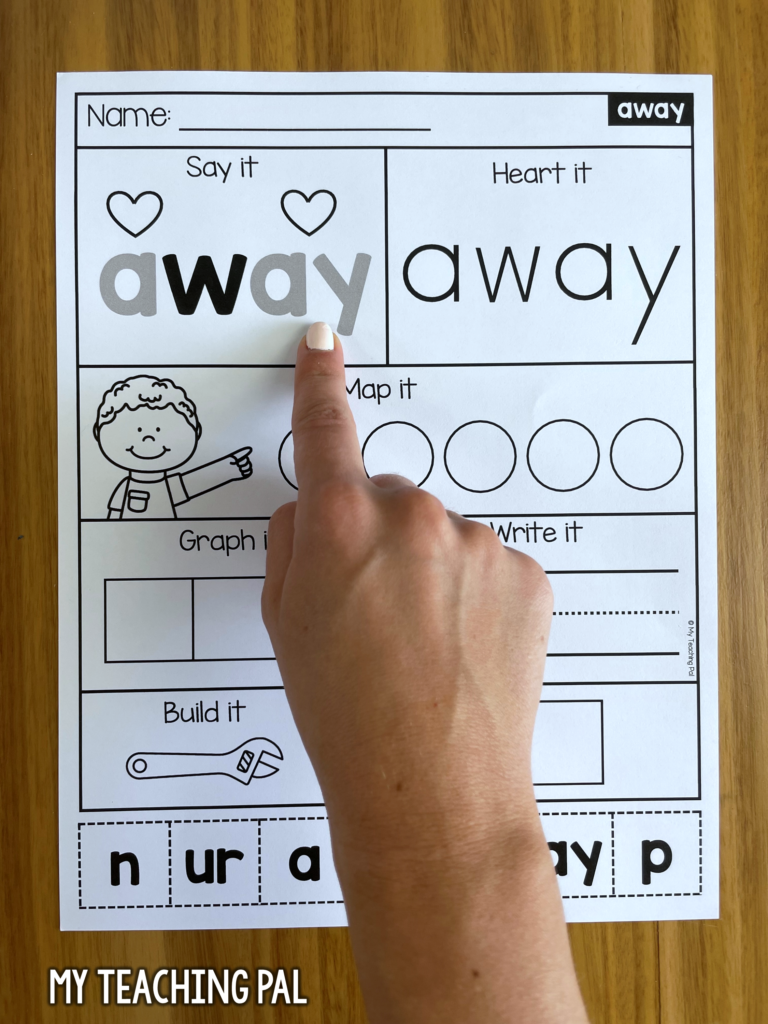
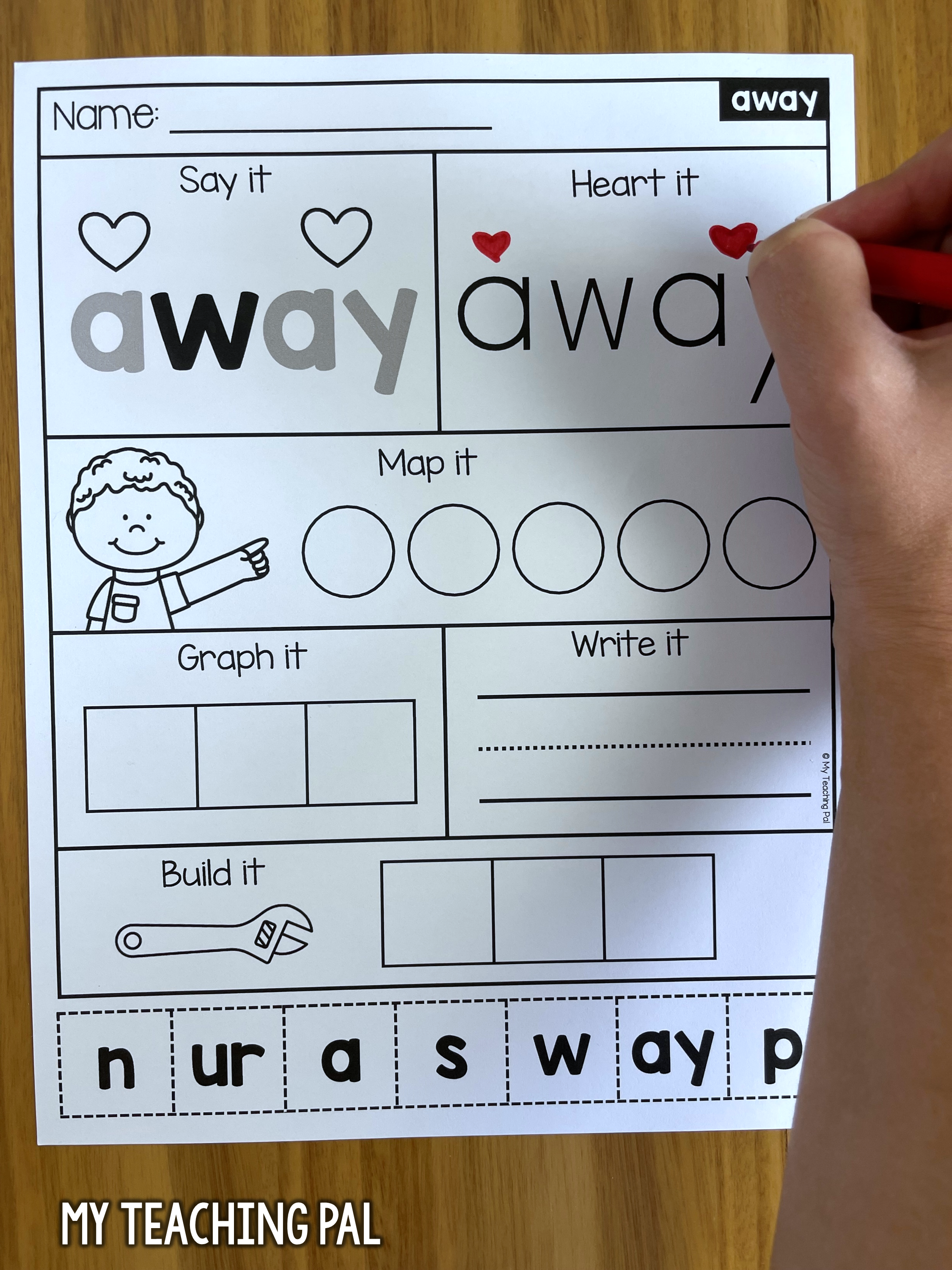
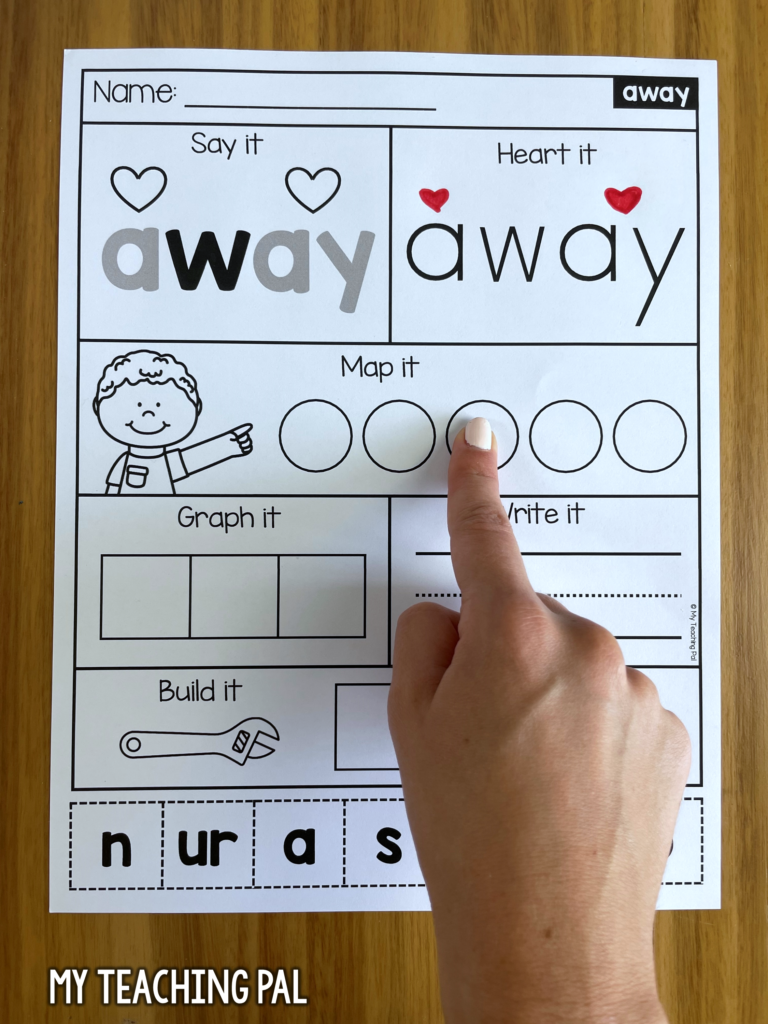
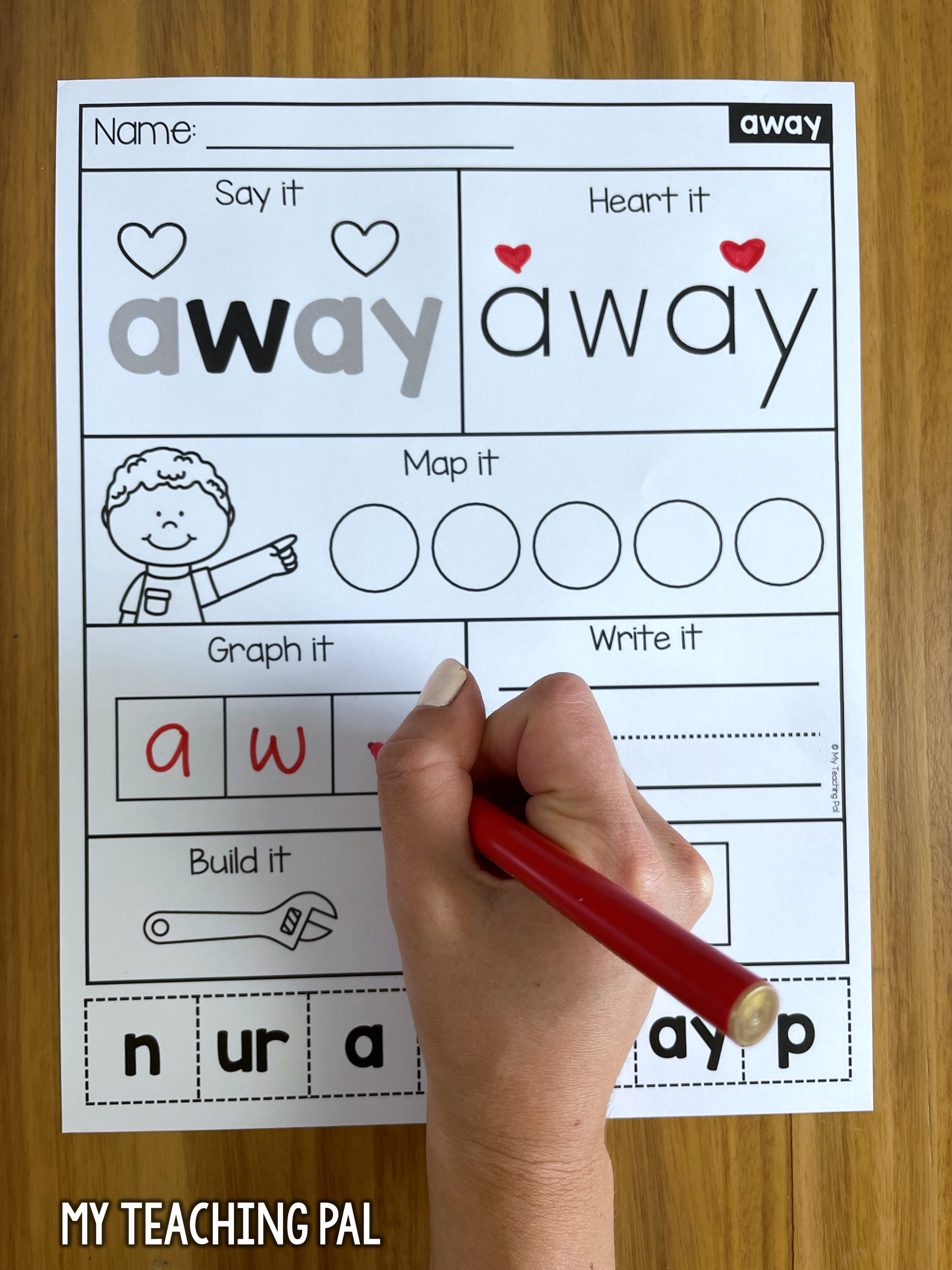
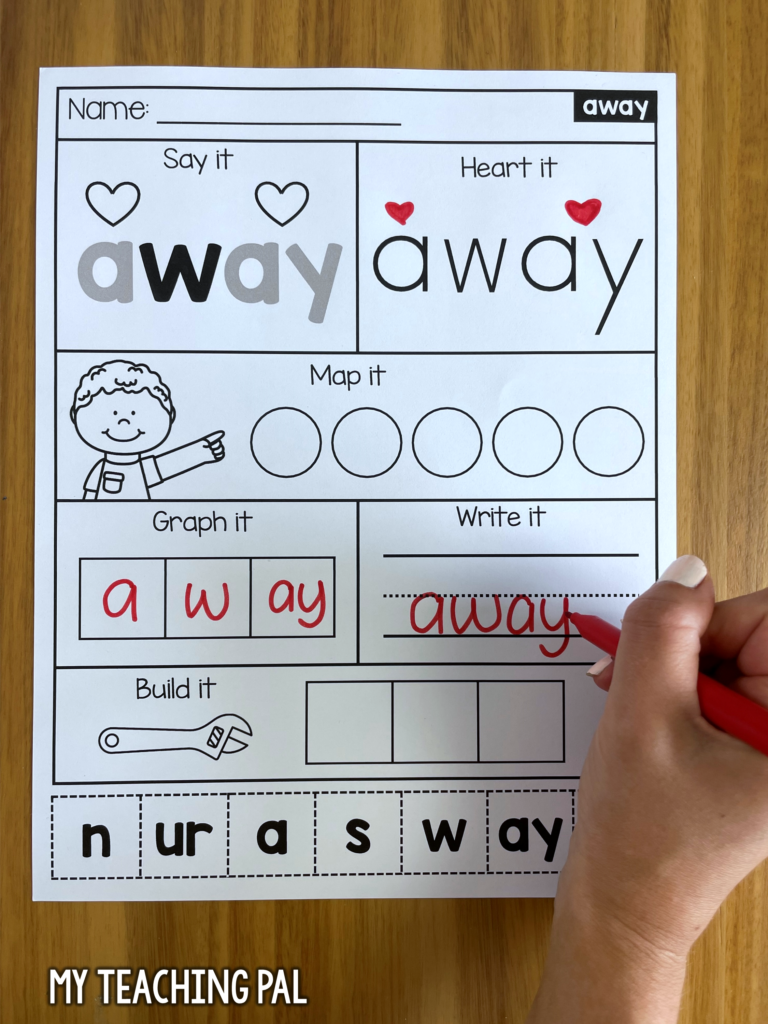
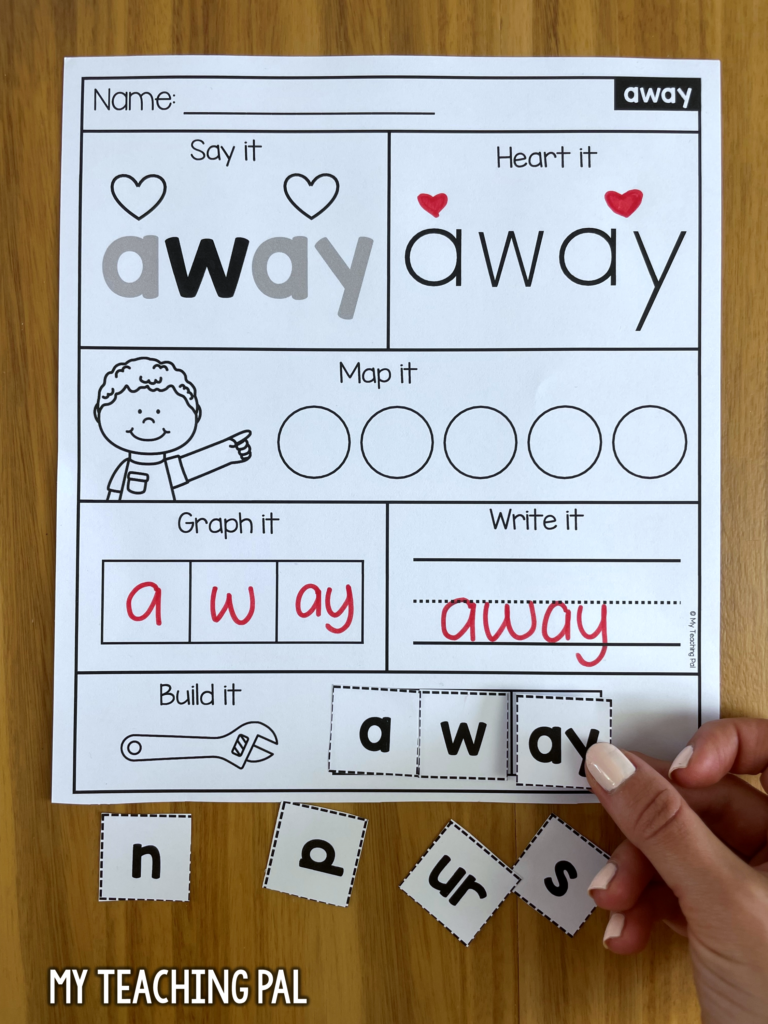
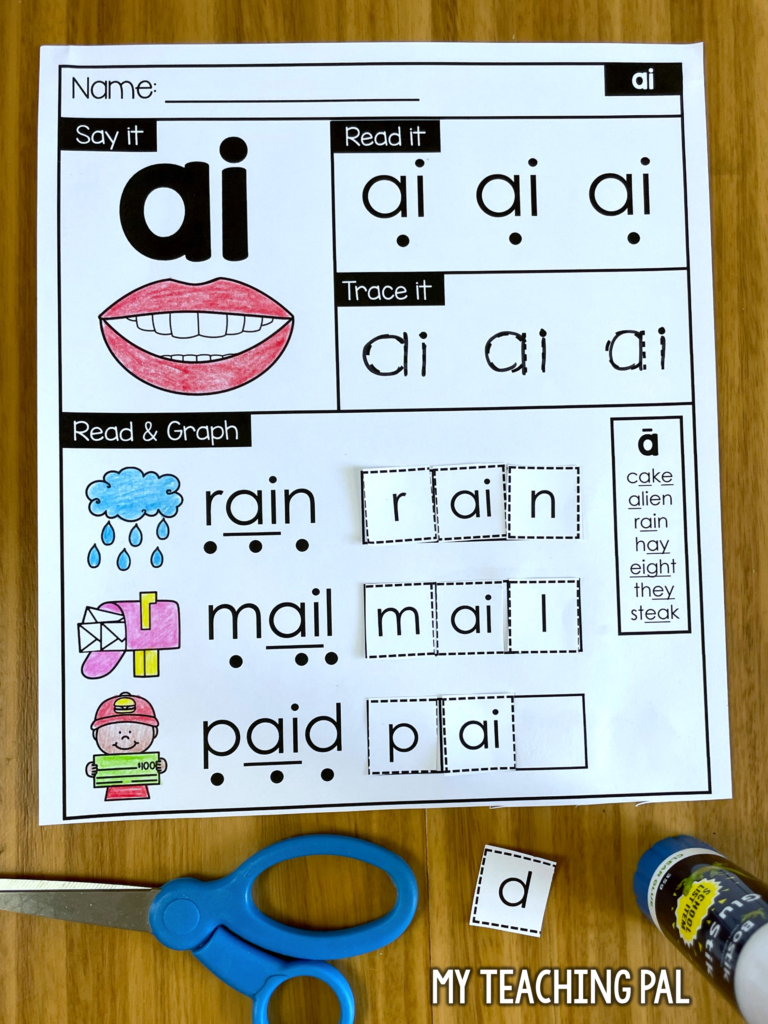
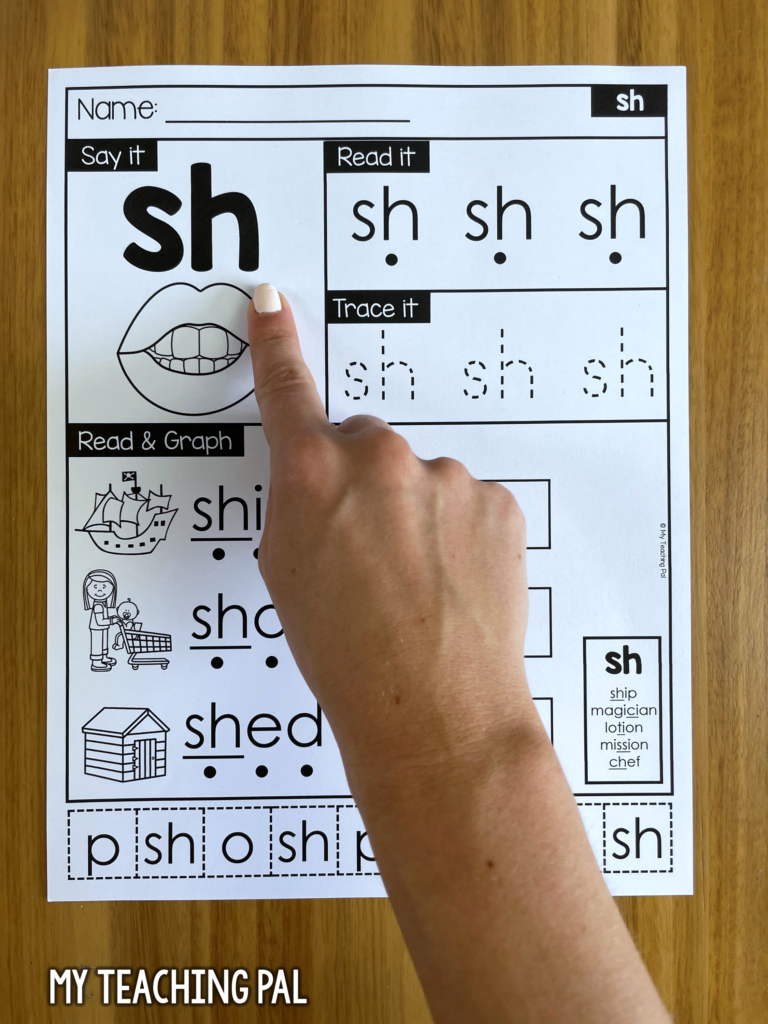
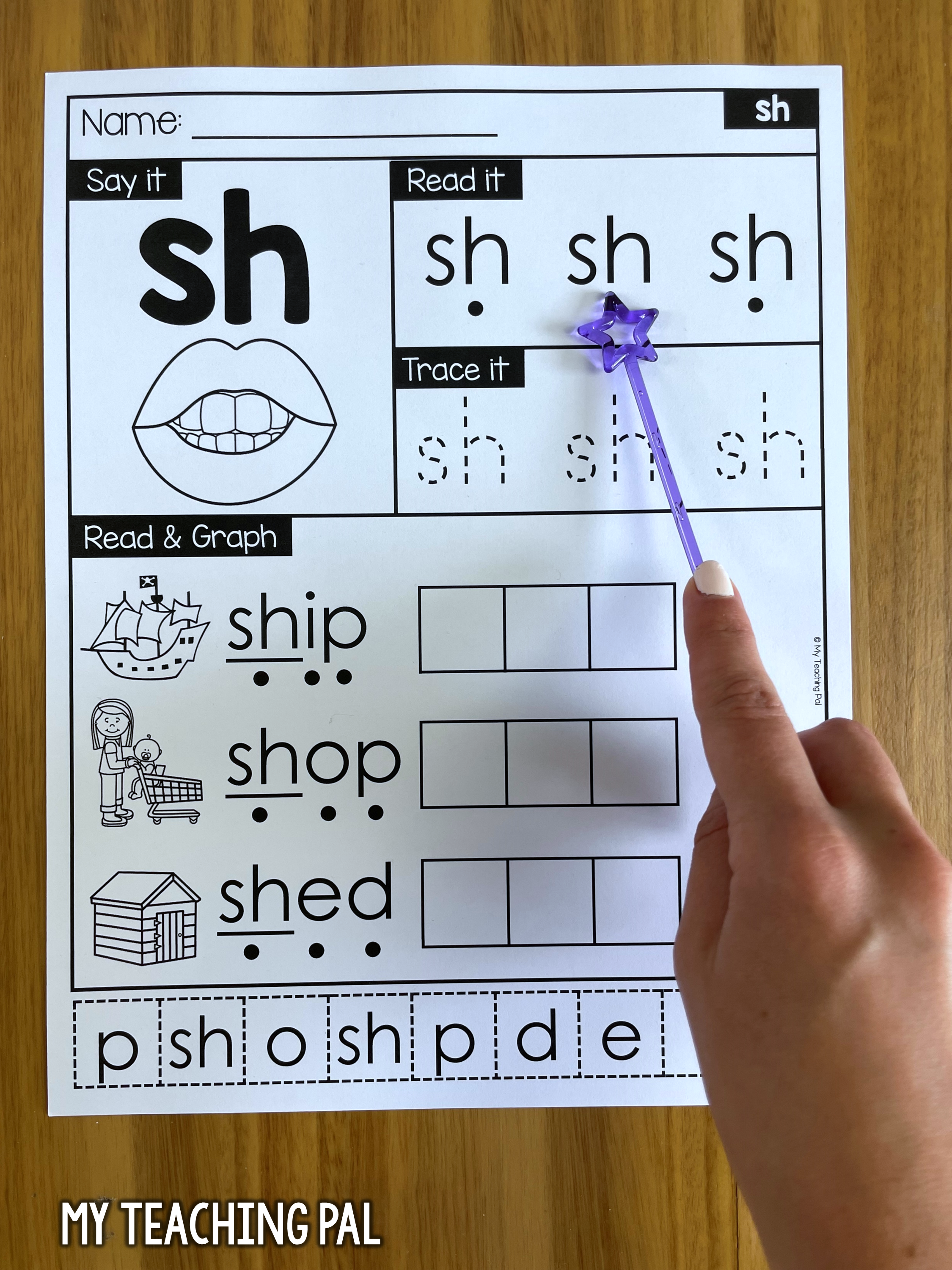
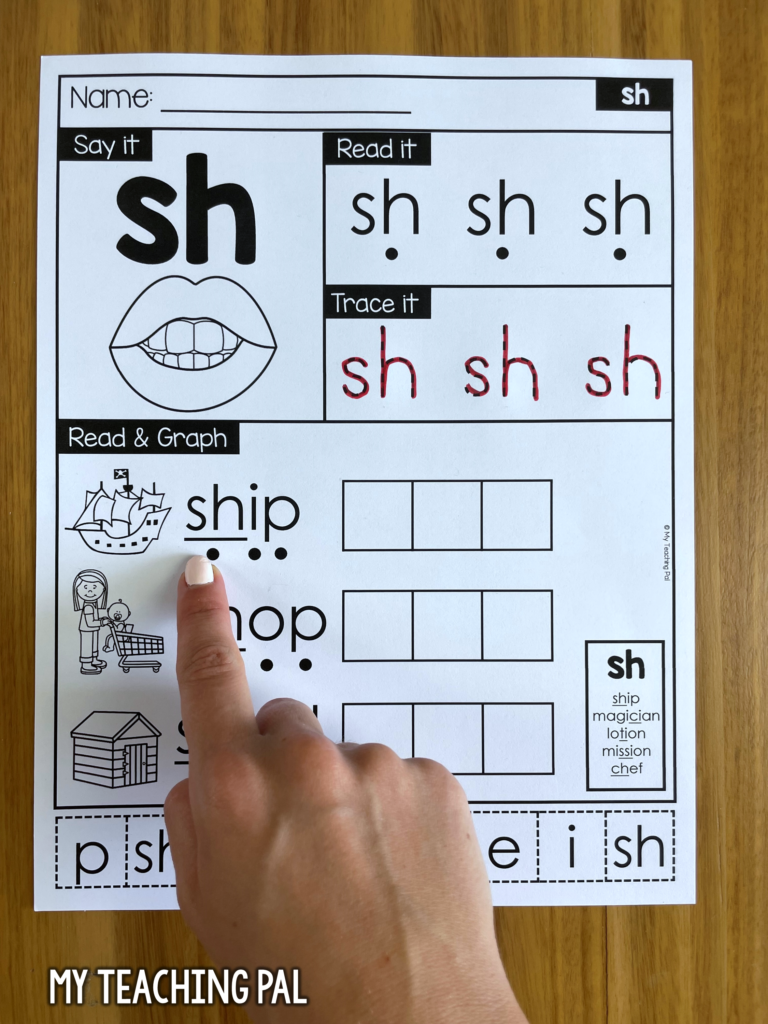
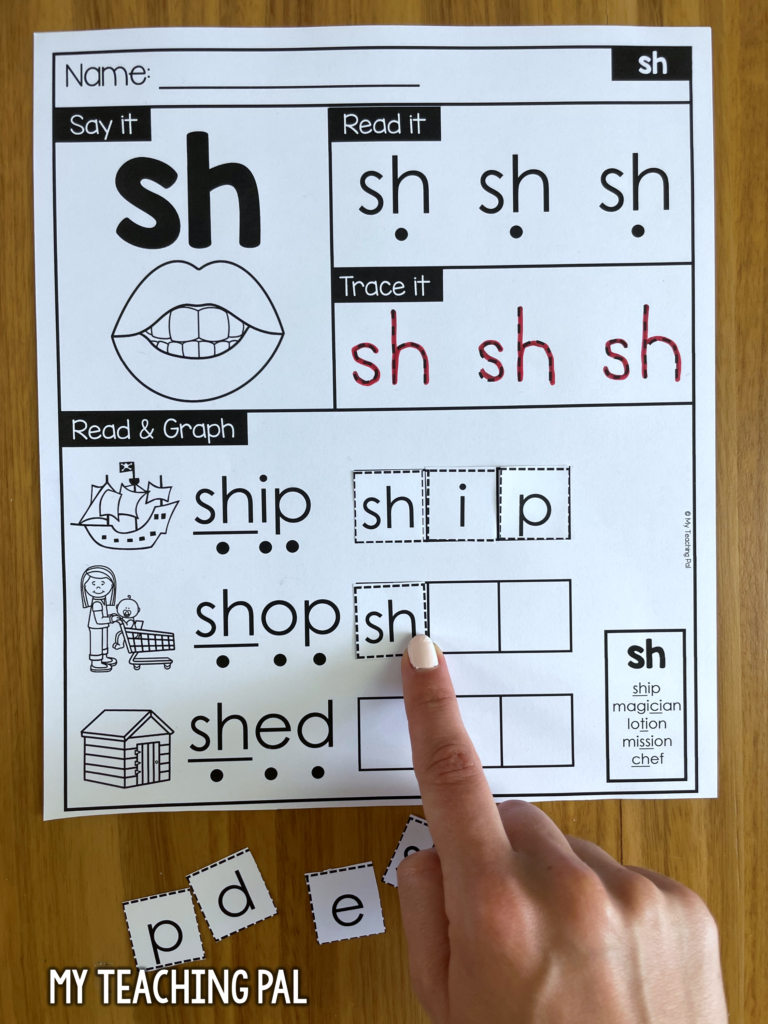








Leave a Comment